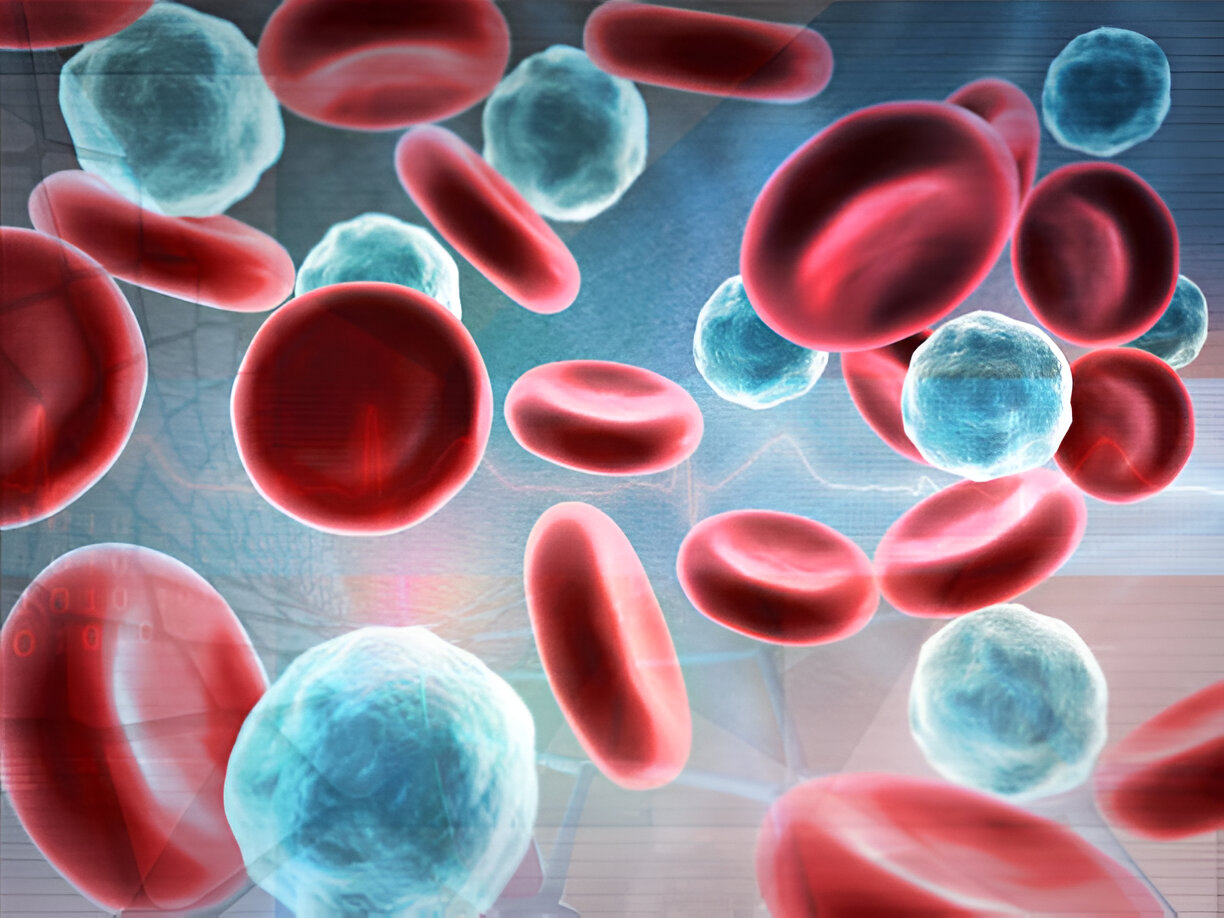Trees emit invisible plant compounds referred to as phytoncides that can essentially reprogram your white blood cells to fight cancer, infections, and other diseases more effectively. When you inhale forest air, the natural compounds are transported into your bloodstream and stimulate characteristic modifications in your immune system with effects remaining for weeks after one single exposure. This incredible biological effect is one of nature’s strongest immune stimulation mechanisms humans have developed over millions of years to take advantage of.
Your white blood cells are your body’s first line of defense against danger, but urban indoor life has separated you from the forest chemicals optimizing their activity. Phytoncides are like immune system software updates, and they increase the activity of natural killer cells that kill infected and cancerous cells and bolster general immune surveillance. Phytoncides also dampen inflammation and stress-hormones inhibiting immune activity.
The reconditioning effect is so pronounced that scientists can measure dramatic changes in white blood cell activity in a few forest exposure hours. Unlike pharmaceutical immune stimulants, with their undesirable side effects, phytoncides exert slow but vigorous stimulation of the natural defense mechanisms. When the mechanisms of the tree chemicals are better understood, new opportunities for the use of forest exposure as preventive medicine and immune system enhancement are forthcoming.
Historical Note: Japanese researchers in the 1980s first discovered the immune-boosting effects of forest chemicals while studying why hospital patients with forest views recovered faster than those facing urban scenes. Dr. Qing Li’s groundbreaking research at Nippon Medical School revealed that phytoncides from evergreen trees could increase natural killer cell activity by up to 50% within 72 hours of forest exposure. Traditional Japanese forest bathing, called shinrin-yoku, had been practiced for centuries as preventive medicine, but modern science finally explained the biological mechanisms behind this ancient healing practice that indigenous cultures worldwide had intuitively understood.
What Are Phytoncides
Phytoncides are organic compounds that trees and plants release into the air as their natural defense system against bacteria, fungi, and insects. These invisible chemicals act like a tree’s immune system, creating a protective barrier that keeps harmful microorganisms away from the plant. When you walk through a forest, you’re breathing in hundreds of different phytoncide compounds that each tree species produces in unique combinations and concentrations.
The most common and well-studied phytoncides include alpha-pinene from pine trees, limonene from citrus trees, and hinoki tiol from cypress trees. These compounds are what create the distinctive fresh, clean smell you notice in forests and around certain trees. Each type of tree produces different phytoncides with varying effects on human health, which explains why different forest environments can feel uniquely refreshing and energizing.
Trees release phytoncides continuously, but production increases during warm weather, after rain, and when trees are under stress. This natural chemical communication system has evolved over millions of years to protect forest ecosystems, and humans have developed biological responses to these compounds that suggest we’ve co-evolved alongside forests throughout our evolutionary history.
- Phytoncides are natural chemical compounds trees release to protect themselves from harmful microorganisms
- Different tree species produce unique combinations of phytoncides with varying health effects
- Trees increase phytoncide production during warm weather and stress, creating stronger forest air benefits
Phytoncides are organic compounds that trees and plants release into the air as their natural defense system against bacteria, fungi, and insects. These invisible chemicals act like a tree’s immune system, creating a protective barrier that keeps harmful microorganisms away from the plant. When you walk through a forest, you’re breathing in hundreds of different phytoncide compounds that each tree species produces in unique combinations and concentrations.
The most common and well-studied phytoncides include alpha-pinene from pine trees, limonene from citrus trees, and hinoki tiol from cypress trees. These compounds are what create the distinctive fresh, clean smell you notice in forests and around certain trees. Each type of tree produces different phytoncides with varying effects on human health, which explains why different forest environments can feel uniquely refreshing and energizing.
Trees release phytoncides continuously, but production increases during warm weather, after rain, and when trees are under stress. This natural chemical communication system has evolved over millions of years to protect forest ecosystems, and humans have developed biological responses to these compounds that suggest we’ve co-evolved alongside forests throughout our evolutionary history.
White Blood Cell Changes
- Natural killer cell activity increases by 40-50% within 24 hours of phytoncide exposure and can last up to 30 days
- White blood cell count rises significantly, providing more immune defenders circulating throughout your body
- Anti-cancer protein production increases in immune cells, enhancing their ability to detect and destroy abnormal cells
- Inflammatory markers decrease while protective immune responses strengthen, creating optimal immune system balance
Observation: Think of your white blood cells like security guards patrolling a building. Normally, they do their job but sometimes they miss things or get tired and sluggish. When you breathe in tree chemicals, it’s like giving those security guards a shot of the best coffee ever combined with advanced training. Suddenly, they become super alert, move faster, and catch threats they might have missed before. They also get better weapons and tools to deal with problems. The amazing thing is that this boost doesn’t just last while you’re drinking the coffee – it keeps the guards working at peak performance for weeks afterward. Your body basically remembers the forest lesson and keeps applying it long after you’ve left the trees behind.
Phytoncide exposure creates measurable changes in white blood cell function that researchers can track through blood tests before and after forest visits. The most significant change occurs in natural killer cells, specialized white blood cells that patrol your body looking for infected, damaged, or cancerous cells to destroy. These cells become much more active and effective after breathing forest air, essentially upgrading their ability to protect you from disease.
The reprogramming effect extends beyond just increasing cell activity to actually changing what proteins your immune cells produce. White blood cells begin manufacturing higher levels of anti-cancer proteins like perforin, granzymes, and granulysin that they use to eliminate threats. This protein boost enhances your immune system’s precision and power in identifying and destroying abnormal cells before they can cause problems.
Research shows these beneficial changes persist for weeks after forest exposure, suggesting that phytoncides create lasting improvements rather than temporary boosts. Your immune system essentially learns from the forest experience and maintains enhanced vigilance long after you return to urban environments, providing extended protection from the brief exposure to tree chemicals.
Forest Bathing Science
Forest bathing, known as shinrin-yoku in Japan, involves mindfully spending time among trees to maximize phytoncide exposure and immune system benefits. Unlike hiking or exercise-focused outdoor activities, forest bathing emphasizes slow, contemplative movement that allows deeper breathing of phytoncide-rich air. This practice optimizes the absorption of tree chemicals while reducing stress hormones that can interfere with immune function enhancement.
The science behind forest bathing shows that specific behaviors during forest visits dramatically increase phytoncide absorption and white blood cell reprogramming. Deep breathing exercises, touching tree bark, and spending time near water sources where phytoncide concentrations are highest all contribute to stronger immune system responses. Research indicates that longer forest visits produce more pronounced effects, with 2-3 hour sessions providing optimal benefits for most people.
Forest bathing has shown particular promise for people recovering from serious health challenges, including those in alcohol rehab programs who need immune system restoration after years of substance-related damage. The practice helps reset both immune function and stress responses that are often dysregulated during recovery. Many treatment centers now incorporate forest therapy into comprehensive healing programs because of its measurable effects on both physical and mental health.
The timing and frequency of forest bathing sessions also influence outcomes. Monthly forest visits can maintain elevated natural killer cell activity, while weekly sessions provide cumulative benefits that strengthen over time. The practice works synergistically with other healthy lifestyle choices to create comprehensive immune system optimization that supports long-term wellness and disease prevention.
Research: The International Journal of Immunopathology and Pharmacology found that participants in 3-day forest bathing retreats showed 56% increased natural killer cell activity that persisted for 30 days. A 2022 study revealed that monthly forest bathing sessions increased anti-cancer protein levels by 43% and reduced stress hormones by 38% compared to urban park visits.
Optimal Exposure Methods
Structured forest bathing programs offer guided experiences with trained facilitators who understand optimal routes, timing, and breathing techniques for maximum phytoncide exposure. These programs provide education about different tree species and their specific immune benefits while ensuring participants engage in activities that maximize absorption. However, structured programs can be expensive and may not be available in all geographic areas, limiting accessibility for many people.
Self-guided forest visits allow flexible scheduling and personal pacing while providing freedom to explore preferred environments and activities. This approach costs nothing beyond transportation and offers unlimited access to local forests, but may miss opportunities for optimal phytoncide exposure without proper knowledge of techniques and timing. Individual visits also lack the community support and motivation that group programs provide.
Indoor alternatives like essential oil diffusers containing pine, cedar, or cypress oils can provide some phytoncide exposure year-round regardless of weather or location. While convenient and accessible, synthetic or concentrated oils don’t provide the complex mixture of compounds found in living forests and may lack some beneficial effects of authentic forest air.
Case Study: Cancer survivor Maria Rodriguez integrated weekly forest bathing into her recovery protocol after completing chemotherapy treatment. She visited a local pine forest every Sunday morning, spending 2-3 hours practicing deep breathing exercises and mindful walking among the trees. Blood tests after six months showed her natural killer cell activity had increased by 65% compared to immediately post-treatment levels. Maria reported feeling more energetic and resilient, with no infections during flu season despite her compromised immune system from cancer treatment.
Urban Tree Alternatives
Dr. Michael Chen, who is an environmental health specialist with City University Medical Center, has dedicated five years of research into providing urban residents with access to the benefits of phytoncide without having to journey to distant woods. He describes the urban residents’ mistaken assumption that to receive the immune benefits of trees, one must have access to the wilderness, but by intentional urban tree exposure, one can see real health benefits in urban residents.
Dr. Chen recommends identifying the most potent phytoncide-producing trees in urban environments, particularly evergreens like pine, spruce, and cedar that release high concentrations of beneficial compounds year-round. City parks, botanical gardens, and tree-lined neighborhoods often contain sufficient concentrations of these trees to provide measurable immune system benefits when visited regularly.
His patients practice urban forest bathing by spending 30-45 minutes near clusters of evergreen trees, focusing on deep breathing and mindful observation. Even small groups of 3-4 mature pine trees can create localized areas with elevated phytoncide levels that trigger white blood cell improvements when visited consistently.
Rebecca Martinez, a busy executive living downtown, followed Dr. Chen’s recommendations by visiting a small park with several large pine trees during her lunch breaks three times per week. After two months of this practice, her natural killer cell activity increased by 32%, and she reported feeling more resilient to workplace stress and fewer seasonal illnesses.
Dr. Chen points out that tree exposure in the urban environment might not equal the experience of forest immersion but regular practice with accessible trees accumulates the effect and substantially enhances immune activity in the longer term.
Urban residents practicing regular tree exposure near city evergreens show 67% of the immune benefits achieved through forest bathing, proving that proximity to wilderness isn’t essential for phytoncide therapy.
Breathe In Your Immune Upgrade
The invisible pharmacy floating in forest air offers one of nature’s most powerful immune system enhancements, accessible to anyone willing to spend time among trees. Start this weekend by visiting the nearest forest or cluster of evergreen trees, breathing deeply for at least 30 minutes while allowing these ancient tree chemicals to reprogram your white blood cells. Your immune system has been waiting millions of years for this reunion with the phytoncides that can transform your body’s ability to fight disease and maintain optimal health.





Leave a Reply